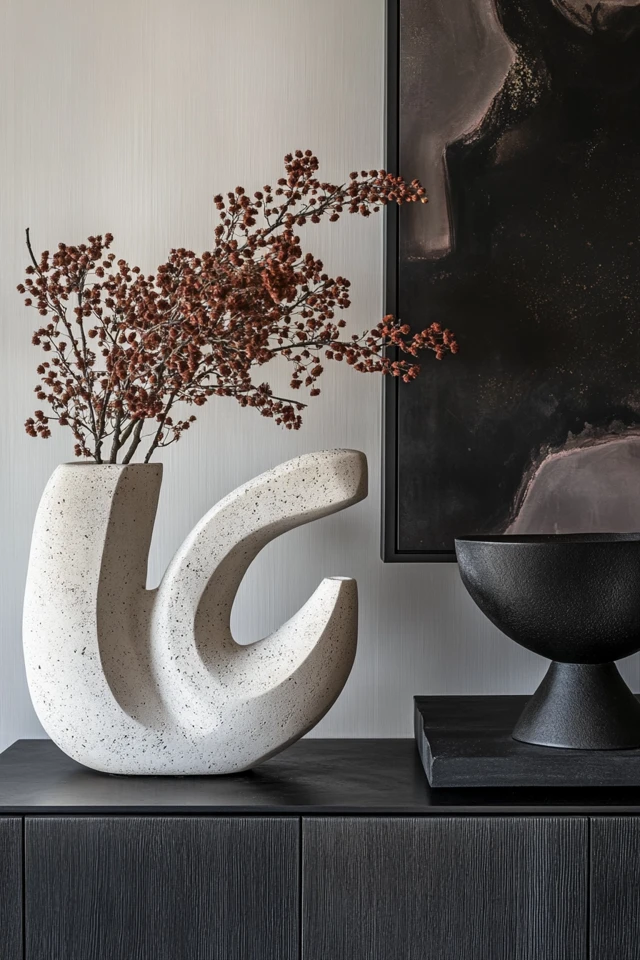Introduction
Every great design tells a story, and sculptural pieces are some of the best storytellers in interior design. Whether it’s a curving metal sculpture, a textured ceramic vase, or a bold statement chair, these pieces go beyond mere functionality. They create visual intrigue, add layers of texture, and bring depth to your space. Sculptural decor isn’t just art—it’s a conversation starter, a focal point, and an expression of creativity that elevates your home’s design to the next level.
I still remember the moment I fell in love with sculptural design. I visited a friend’s loft apartment and was immediately captivated by a towering, abstract floor sculpture positioned near the windows. Its twisting metal design caught the light, casting dynamic shadows that shifted as the day went on. What struck me most was how the piece seemed to anchor the room, creating a sense of balance and harmony amidst the otherwise minimalist decor. It was functional art, inspiring emotion and curiosity every time I looked at it.
In this guide, we’ll explore how to incorporate sculptural pieces into your home to create depth, intrigue, and balance. From furniture and lighting to decor accents, sculptural elements can turn any space into a visually dynamic and inviting environment.
The Perfect Design for You
Sculptural pieces are ideal for anyone who:
- Wants to add a sense of artistry and sophistication to their home.
- Feels their space lacks character, depth, or a central focal point.
- Enjoys combining form and function in their decor.
- Wants to showcase bold, creative design without overwhelming the space.
Imagine a living room where a curvaceous accent chair sits beside a textured side table, or a dining room where a chandelier doubles as a floating work of art. These spaces exude elegance and personality, showcasing how sculptural elements can transform your home into an artistic sanctuary.
Whether you prefer bold, dramatic forms or subtle, understated shapes, sculptural pieces can adapt to any style and create a space that feels truly unique.
Picture Gallery
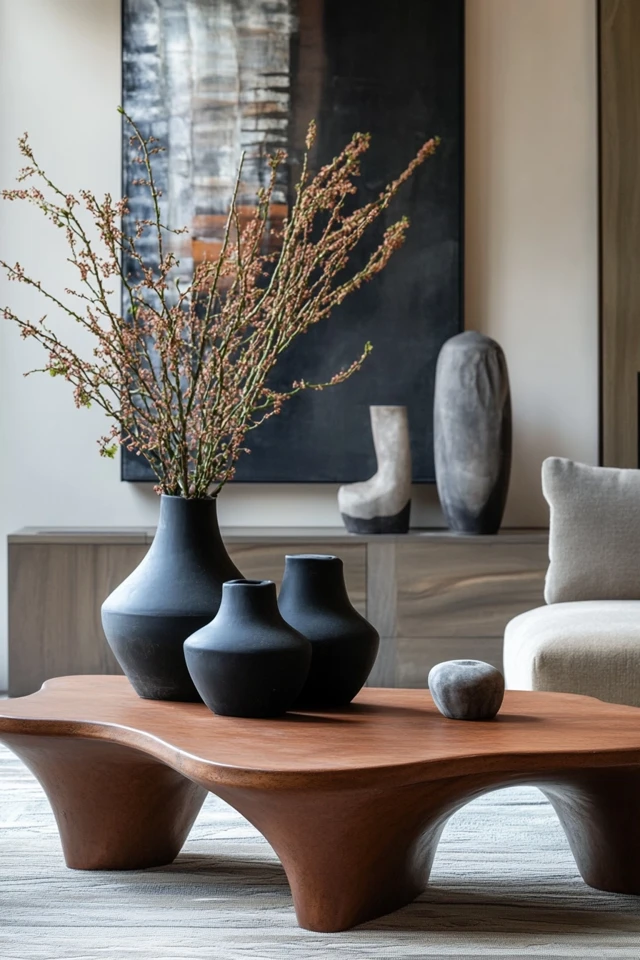
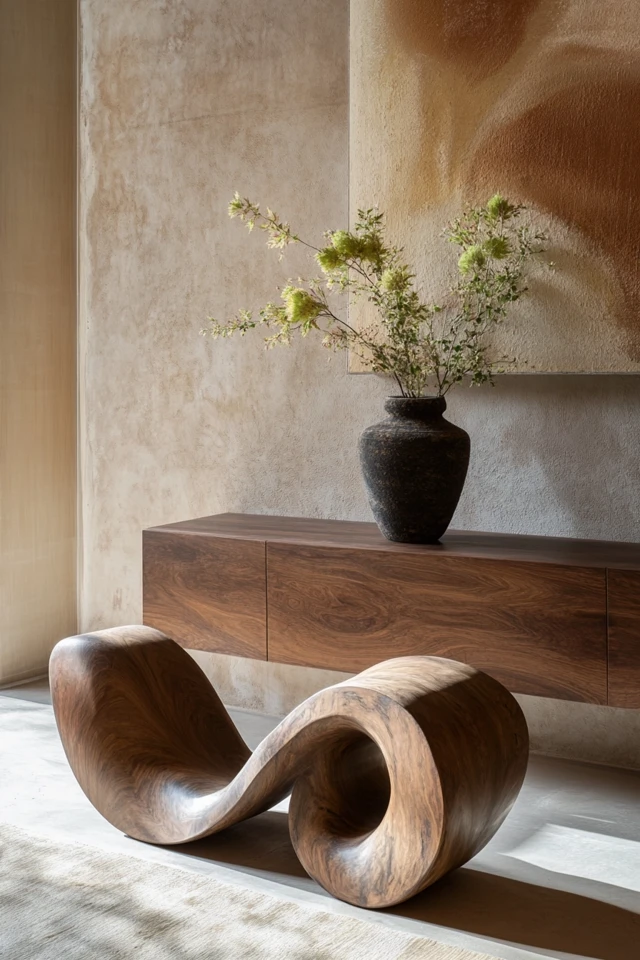
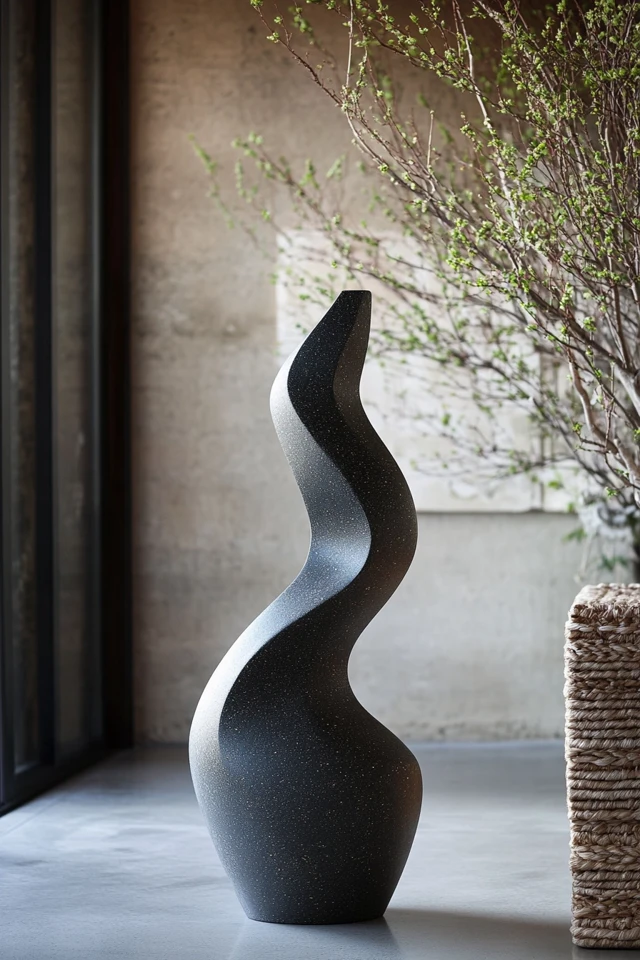
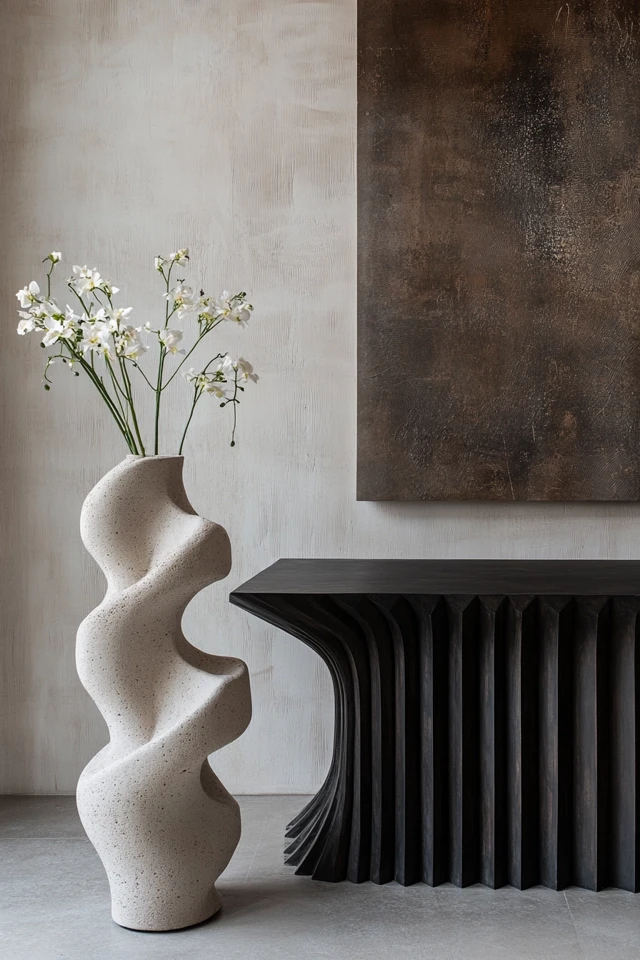
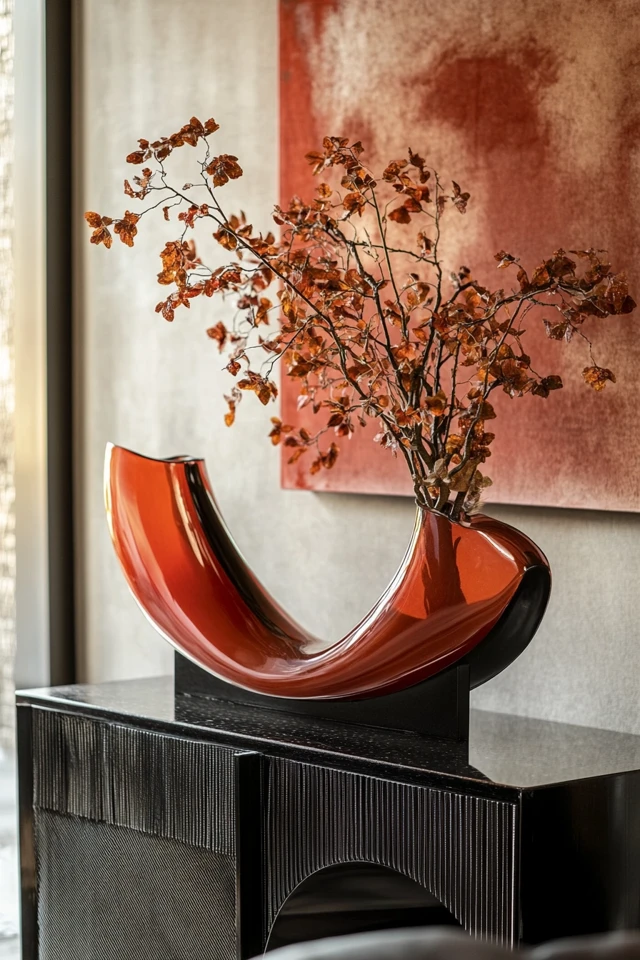
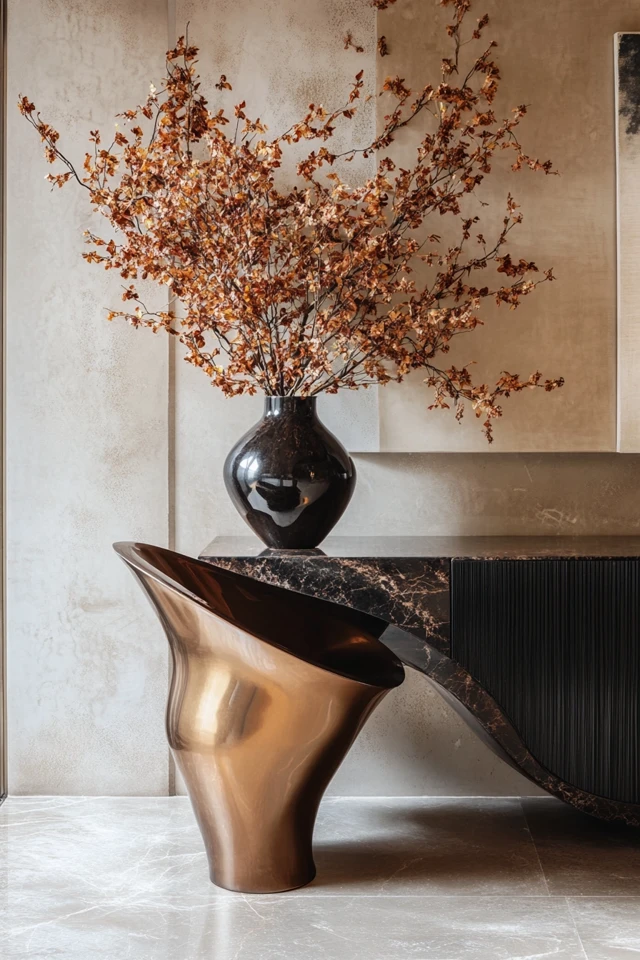
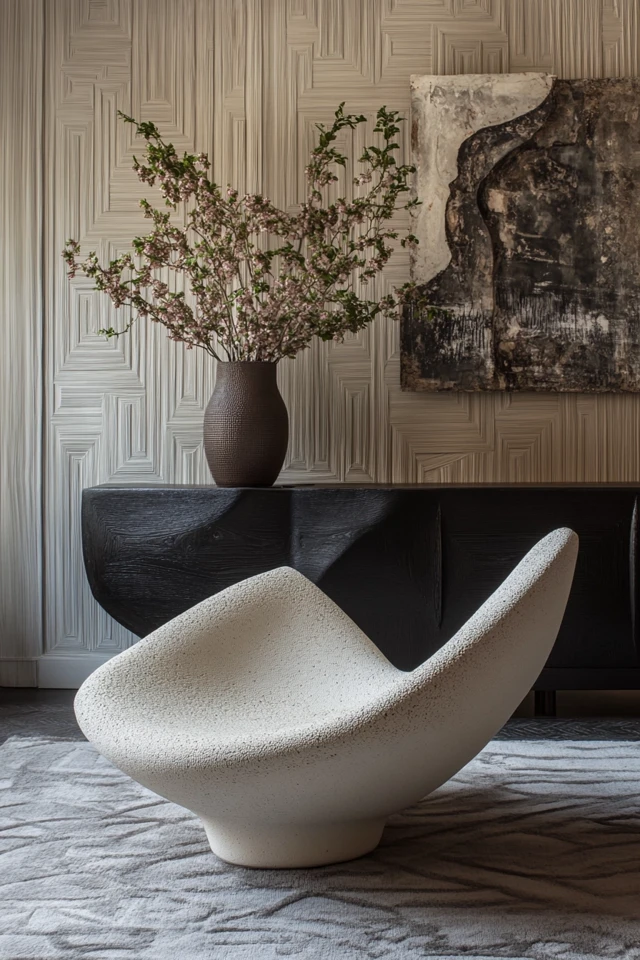
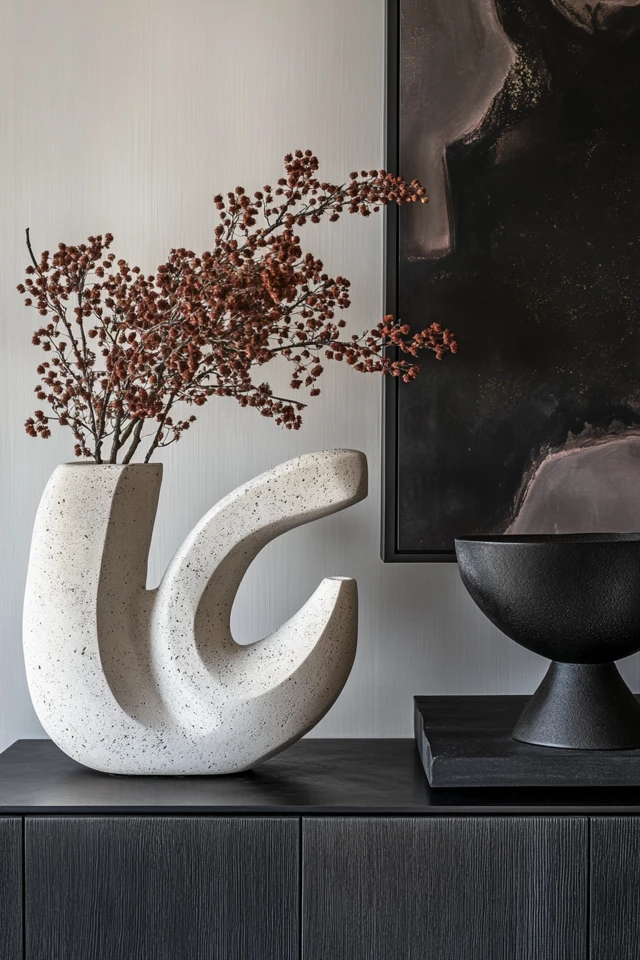
Why Sculptural Pieces Work
Sculptural pieces bring more than just aesthetics to a room—they enhance the overall design with purpose and impact. Here’s why they work so well:
- Creates Visual Focus: Sculptural pieces naturally draw the eye, making them ideal for creating focal points and anchoring a room.
- Adds Texture and Depth: These pieces introduce layers of texture and dimension, preventing a space from feeling flat or one-dimensional.
- Combines Art and Function: Many sculptural pieces, such as lighting fixtures or furniture, serve practical purposes while doubling as artistic statements.
- Evokes Emotion: Sculptural decor can inspire curiosity, conversation, and even a sense of wonder, elevating the mood of a room.
- Balances Minimalism and Drama: Sculptural forms add interest to minimalist spaces or provide contrast in more eclectic designs.
Designers often describe sculptural pieces as the “soul” of a room—subtle yet impactful elements that bring a space to life.
How to Use Sculptural Pieces to Bring Depth to Your Space: Step-by-Step
1. Start With a Statement Piece
- Choose a single sculptural piece to serve as the focal point of your room:
- Consider bold forms like an abstract sculpture, a dramatic chandelier, or an oversized vase.
- Place it in a central location where it can command attention, such as a coffee table, entryway, or mantel.
- A statement piece sets the tone for the rest of your design.
- Example: In a living room, place a large ceramic vase with organic curves on a console table to create a striking yet subtle focal point.
2. Incorporate Sculptural Furniture
- Look for furniture with unique, sculptural forms that double as art:
- Choose chairs with bold silhouettes, like egg chairs or curved accent chairs.
- Opt for coffee tables, consoles, or side tables with irregular or geometric shapes.
- Sculptural furniture adds both functionality and visual intrigue to your space.
- Example: In a dining room, use a pedestal dining table with a dramatic, sculpted base to anchor the space.
3. Use Lighting as Functional Sculpture
- Lighting fixtures can act as both practical elements and sculptural decor:
- Install chandeliers with artistic forms, such as cascading glass or abstract metal designs.
- Use sculptural floor lamps or pendant lights with curving or angular silhouettes.
- These pieces create depth and visual drama while serving a functional purpose.
- Example: In a bedroom, hang a mid-century modern chandelier with branching arms to create a statement above the bed.
4. Layer Smaller Sculptural Accents
- Add smaller sculptural decor items to complement your main pieces:
- Use decorative objects like carved wood figurines, abstract sculptures, or textured ceramic bowls.
- Group items in odd numbers or at varying heights to create a layered, dynamic display.
- Smaller accents enhance depth without overwhelming the space.
- Example: On a bookshelf, combine a textured ceramic sculpture with a smooth metal orb and a stack of books for a curated look.
5. Choose Organic Shapes for Softness
- Incorporate pieces with flowing, organic forms to soften harsh lines:
- Use furniture or decor with rounded edges, wavy silhouettes, or natural materials.
- Organic shapes bring a sense of movement and harmony to the design.
- These shapes are especially effective in minimalist or modern spaces.
- Example: In a bathroom, place a freeform stone sink on a sleek vanity to create a balance between natural and modern elements.
6. Experiment With Materials and Textures
- Play with a variety of materials to add depth and contrast:
- Mix materials like metal, stone, glass, wood, and ceramics for a layered look.
- Use textured pieces like woven sculptures, hammered metal decor, or chiseled stone accents.
- Textural variety prevents your design from feeling flat.
- Example: In a foyer, place a sculptural bench made of polished wood next to a rough-hewn stone planter for a rich contrast.
7. Consider Scale and Proportion
- Balance the scale of sculptural pieces with the size of your space:
- Use larger pieces in spacious rooms to make a statement without overcrowding.
- Opt for smaller, delicate pieces in compact spaces to avoid overwhelming the design.
- Proportion ensures the pieces enhance rather than dominate the space.
- Example: In a small apartment, use a slender, vertical floor sculpture to add height without taking up too much room.
8. Blend Styles for Contrast
- Mix sculptural elements from different design styles to create contrast:
- Pair a modern sculpture with vintage furniture or a traditional chair with a contemporary lamp.
- Use juxtaposition to create visual interest and a more dynamic design.
- Blending styles keeps your space fresh and unexpected.
- Example: In a living room, place a sleek, modern metal sculpture on a rustic wooden coffee table for a striking contrast.
9. Use Negative Space to Highlight Sculptural Pieces
- Allow sculptural pieces room to breathe by surrounding them with negative space:
- Avoid crowding sculptures with too many other decor items.
- Use empty walls, open shelves, or spacious tabletops to let the piece stand out.
- Negative space draws attention to the piece and enhances its impact.
- Example: In an entryway, display a single large abstract sculpture on a minimalist console table for maximum effect.
10. Rotate Pieces for a Fresh Look
- Refresh your space by rotating sculptural pieces seasonally or for special occasions:
- Swap out accents like vases, sculptures, or table decor to match your current mood or the season.
- Experiment with placement to create new focal points.
- Rotating pieces keeps your design dynamic and evolving.
- Example: In a living room, replace a summer-inspired ceramic vase with a metallic sculpture for a wintery touch.
FAQ
1. How do I choose sculptural pieces that fit my style?
Look for pieces that complement your existing decor while adding a unique or contrasting element. Whether your style is minimalist, bohemian, or traditional, there are sculptural pieces to suit every aesthetic.
2. Can I use sculptural pieces in small spaces?
Absolutely! Opt for smaller accents or vertical pieces to add depth without overwhelming the room. Use negative space strategically to highlight the sculpture.
3. Do sculptural pieces have to be expensive?
Not at all! You can find affordable options at thrift stores, artisan markets, or even DIY your own sculptural decor.
4. How do I keep a space with sculptural pieces from feeling cluttered?
Stick to a few key pieces and balance them with clean, open spaces. Use negative space to let each piece shine.
5. Can functional items also be sculptural?
Yes! Many functional items, like lighting fixtures, furniture, or even planters, can double as sculptural decor.
Variations
- Modern Minimalism: Use clean-lined, geometric pieces in neutral tones for a sleek, understated look.
- Organic Elegance: Incorporate flowing, natural shapes in materials like wood, stone, and ceramic for a grounded, earthy feel.
- Industrial Edge: Opt for raw materials like concrete, metal, and glass in bold, angular forms.
- Bohemian Charm: Combine colorful, textured sculptures with natural fibers and patterns for a playful, eclectic vibe.
- Classic Sophistication: Use ornate, traditional sculptures in bronze, marble, or porcelain to create a timeless, elegant design.
How to Showcase It
- Living Rooms: Place sculptural furniture, bold lighting fixtures, or abstract decor on coffee tables, mantels, or sideboards.
- Dining Rooms: Use sculptural centerpieces, like ceramic vases or textured bowls, to anchor the table.
- Bedrooms: Incorporate sculptural bedside lamps, textured headboards, or freestanding art for a serene touch.
- Bathrooms: Use organic-shaped sinks, decorative mirrors, or ceramic accents to add texture and elegance.
- Entryways: Feature a large, statement sculpture or a dramatic lighting fixture to create a memorable first impression.
Occasions to Feature It
- Everyday Living: Enhance your home’s aesthetic with permanent sculptural accents.
- Seasonal Decor: Rotate sculptural pieces that reflect the mood or color palette of the season.
- Entertaining Guests: Use bold, conversation-starting pieces as focal points during gatherings.
- Special Events: Incorporate sculptural decor that complements holiday or event themes.
- Art Collectors’ Showcases: Highlight unique sculptures as part of a curated art display.
Conclusion
Sculptural pieces have the power to transform your space, adding depth, texture, and artistry that goes beyond traditional decor. By thoughtfully incorporating these elements—whether through furniture, lighting, or accents—you can create a home that feels dynamic, intentional, and uniquely yours.
So, embrace the beauty of sculptural design, experiment with bold forms and materials, and let your space come alive with creativity and depth.

